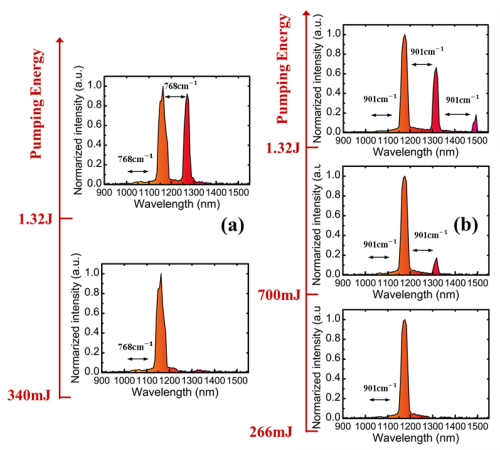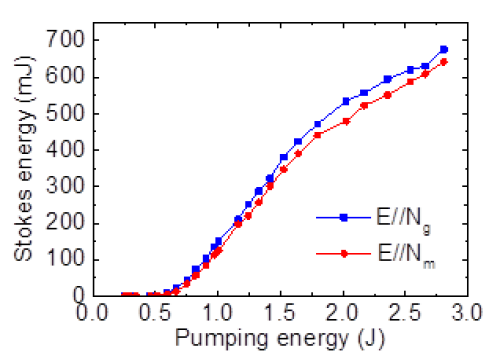Recently, a research team from Shanghai Institute of Optics and Fine Mechanics (SIOM), Chinese Academy of Sciences (CAS), investigated high energy stimulated Raman scattering (SRS) and reported the highest energy Stokes energies outputting. The research article was published on Optics & Laser Technology in August 2021.
SRS is an excellent frequency conversion technique for generating laser spectrum apart from using the traditional active gain medium to satisfy practical requirements.
The KGW crystal is a popular solid-state Raman medium owing to its excellent optical properties, such as rich Stokes output wavelengths with two pumping polarization orientations and wide transmission range, which is suitable for developing high-energy Raman lasers.
In this study, researchers implement two high-energy Raman laser schemes based on KGW crystal: an extra cavity Raman oscillator and a single-pass Raman generator. First, a 7.3J 1064 nm nanosecond laser system is developed to pump the SRS. The simulation results SRS are used to design and predict the cascading behavior of two Raman structures. Then the output energy and spectra of multi-order Stokes lasers are measured with the increasing energy of the 1064 nm pumping laser. A Stokes laser maximum energy of 676 mJ is achieved from the single-pass Raman generator under a 1064 nm pumping laser energy of 2.8 J, which is the highest Stokes energy output of a solid-state Raman laser to the best of our knowledge.
Researchers said, “To the best of our knowledge, it is the highest Stokes energy of nanosecond pumped Raman lasers to be ever reported with direct delivery from the solid-state Raman laser.”
This work was supported by the Shanghai Sailing Program; National Key R&D Program of China; Strategic Priority Research Program of the Chinese Academy of Sciences; National Natural Science Foundation of China; Program of Shanghai Academic/Technology Research Leader; Shanghai Municipal Science and Technology Major Project; Science and Technology Commission of Shanghai Municipality; Youth Innovation Promotion Association CAS.

Fig. 1. Stokes output spectra under different pump energies (a) E‖Ng and (b) E‖Nm conditions. (Image by SIOM)

Fig. 2. Output energies of multiorder Stokes lasers versus the pump energy. (Image by SIOM)
Article website:
https://doi.org/10.1016/j.optlastec.2021.107023
Contact:
WU Xiufeng
General Administrative Office
Shanghai Institute of Optics and Fine Mechanics, CAS
Email: xfwu@siom.ac.cn
Web: http://english.siom.cas.cn/